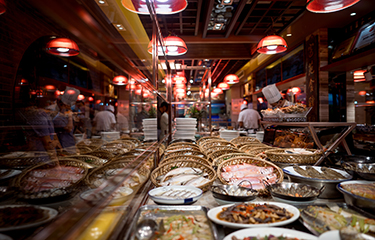Following a recent ban on all Japanese seafood imports into China due to the controversial release of treated cooling water into the Pacific Ocean from the Fukushima Daiichi nuclear power plant, international seafood suppliers and domestic producers alike are lining up to fill the gap in supply.
China, including Hong Kong, bought 42 percent of Japan’s seafood exports prior to the ban, and the relationship was mutual, as Japan has traditionally been a key customer for Chinese seafood processors. While the rift in relations that the release has unleashed is significant in an international relations context, Fan Xubing, the principal of the Beijing-based Seabridge Consultancy, said the actual impact of China’s ban will not be significant.
“Japan is not an important seafood export country. It only exported USD 1.4 billion [EUR 1.3 billion] of seafood in 2022 and less than USD 600 million [EUR 551 million] [of its] exports went to China,” he told SeafoodSource.
According to Fan, scallops and other mollusks accounted for 63.7 percent of those exports, while frozen fish, such as frozen Alaska pollock and frozen Pacific salmon, comprised 14 percent, and fresh fish made up 10.7 percent. Nonetheless, he believes some potential winners in the global seafood marketplace – both domestically and abroad – will emerge as a result of China’s ban.
“China farmed 1.9 million metric tons [MT] of scallop in 2022 and imported 100,000 MT of scallop from Japan in 2022,” he said. “So, without imported Japanese scallops, China-farmed scallops could meet the domestic demand. China [also] imported 2,340 MT of scallops from Canada in 2022. I think Canada will benefit from this ban, as well as Peru and France.”
Another country that may benefit is Russia, which banned all Japanese seafood imports on the day of the wastewater release. Rosselkhoznadzor, Russia’s food safety watchdog, said it hoped to increase the country’s exports to China to address the supply gap from the ban on Japanese products.
"The Chinese market in general is promising for Russian fish products. We hope to increase the number of certified Russian companies and ships, the volume of products and its range," Rosselkhoznadzor said.
Rosselkhoznadzor is planning official discussions with Chinese officials on seafood safety issues and regulations governing the importation of Russian seafood into China, according to Reuters.
Already, more than 50 percent of Russia’s 2.3 million metric tons of annual seafood exports, valued at USD 6.1 billion (EUR ) go to China, including pollock, herring, flounder, sardines, cod, and crab.
Rosselkhoznadzor said it had upped its testing of seafood caught in Russian waters for radioactivity, but said the direction of currents in the Russian Far East, where about 70 percent of Russia's seafood is caught, "would prevent contamination" of its marine products, according to Interfax.
China’s domestic seafood firms could be the biggest beneficiaries of the ban, at least in ...
Photo courtesy of Graeme Kennedy/Shutterstock








